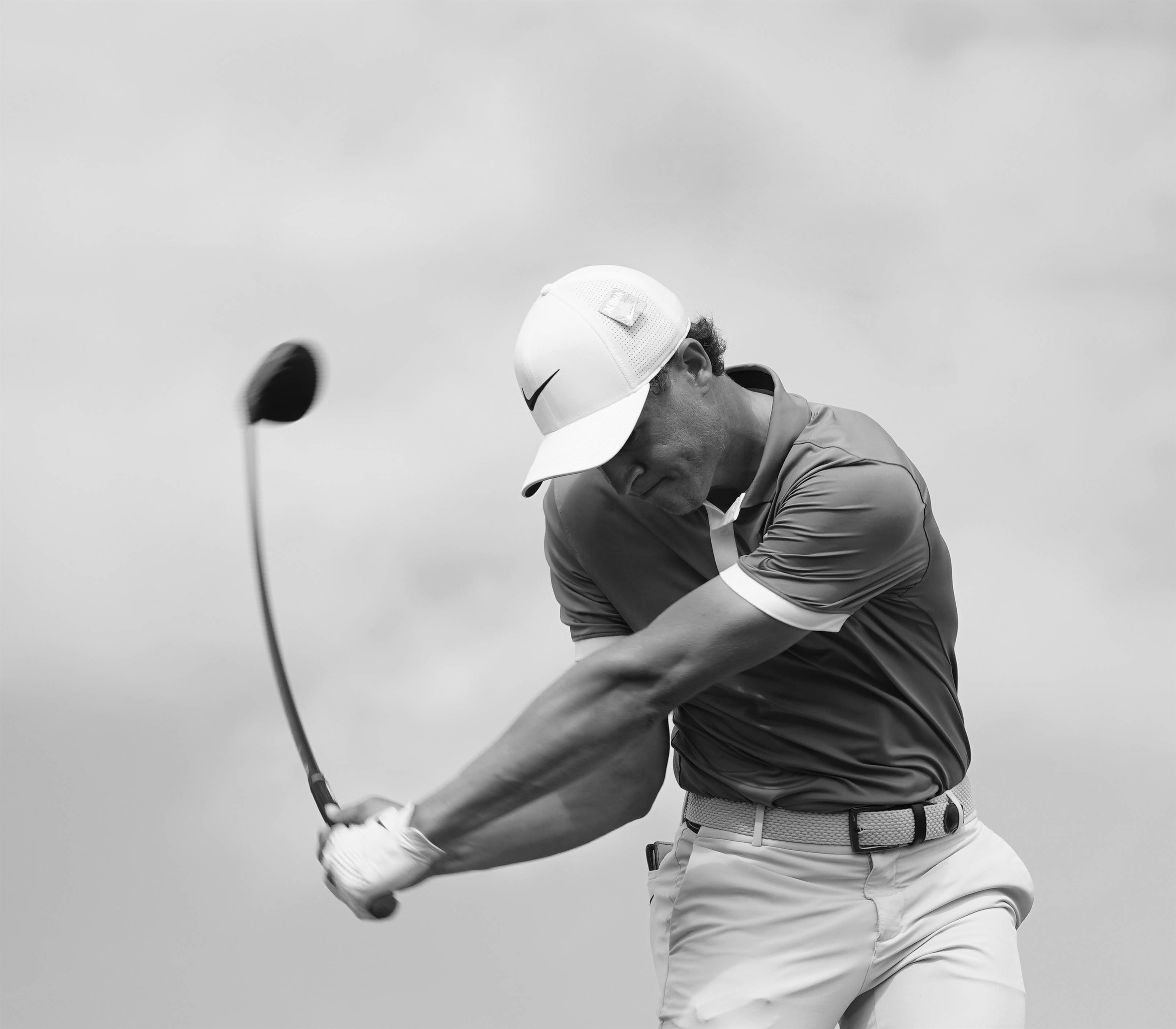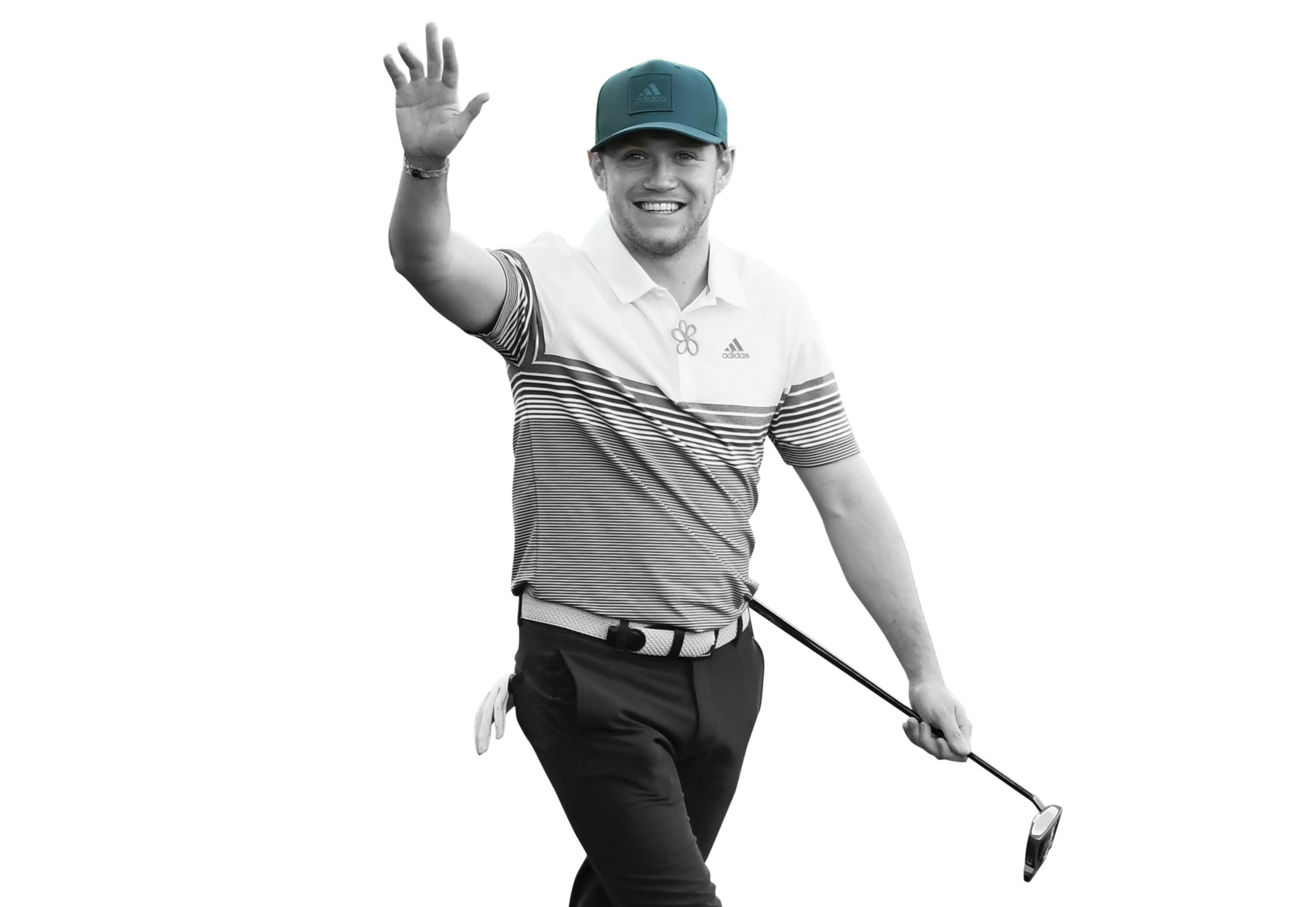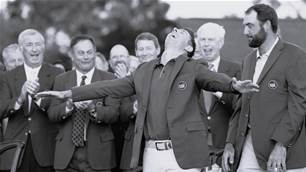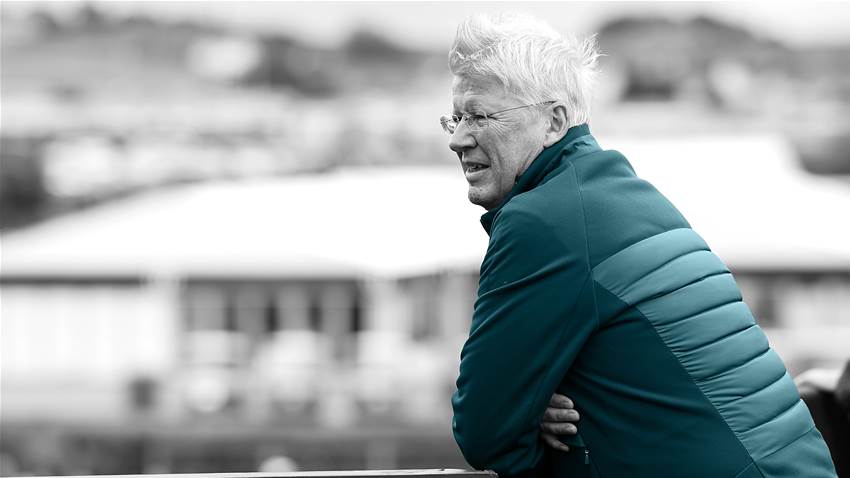The R&A chief sits down to talk about the biggest issues facing golf, from grass roots participation numbers to the distance debate, gender equality, slow play and the Home of Golf, St Andrews.
What is the bigger issue for you moving forward – slow play or distance?
That’s a very good question. But, in many ways, it is a bit too simplistic. What do I really care about? I care about the top end of the game being excellent. Whether that is the professional game or the elite. We want to make sure that we provide pathways that allow people to develop their games. That is really important.
Without that, a young Rory McIlroy would not have been on the putting green at Holywood thinking to himself, “this one for the Open.” So, we have to create that pathway. And we have to grow participation. I would love more people to love the game that you and I love. That’s the big picture.
“What do I really care about? I care about the top end of the game being excellent.” – Martin Slumbers
How we achieve that is nuanced. Whenever I talk to young people about how they play more golf – or any golf – time to play, more than pace, is up there number one, two or three. Therefore, we must focus on that. We need more people playing the game.
I know some in the media don’t like what I am about to say, but you have to look at the professional and amateur games differently. The time to play is driving how many amateurs play. But the pace of the amateur game is pretty good. There are some clubs that are poor. But if we look at the elite end, they play at a reasonably good pace.
I hear bad things about US college golf.
I think college golf is slowing down. But when you look at the professional game two things are relevant. One is that the Tours are players organisations. So, they need to make the decision. But I do believe that the very best are role models for youngsters.
I love the way Rory and Dustin play ready golf. They get on with it. More of that will help in the club game. And that will help participation, and that helps the big picture.
Okay, let’s turn to distance. Let me read you a list I made in less than 10 minutes. I could have gone on and on.
Jack Nicklaus. Gary Player. Tom Watson. Hale Irwin. Arnold Palmer. Lee Trevino. Graham Marsh. Tom Weiskopf. Ian Woosnam. Seve Ballesteros. Peter Thomson. Kel Nagle. Tony Jacklin, Deane Beman. Tiger Woods. Geoff Ogilvy. Michael Bonallack. Bill Campbell. Tom Doak. Bill Coore. They all say that the ball is going too far. If you’re not listening to them, who are you listening to?
I’ve heard from most of them, not all of them. I am very clear on this. We are in the final stages of the research where we have spent alot more than 10 minutes on what is going on. We have talked to professional golfers, men and women. We’ve talked to amateur golfers. We’ve talked to architects. Golf course owners. Equipment manufacturers. Everyone in the game.
We are pulling it all together. And that report, together with a statement of conclusions, will be published by February 4th. Out of that we will come up with a balanced view along with our partners in America. Of next steps.
I’ve been very consistent on this. I believe there is a balance between skill and technology. And that balance is different at different skill levels. We need to ensure though, that golf remains a game of skill. I think that is where we are going. We have to be cognoscente of historic courses. We have discussed the Old Course today. But we could have talked about Merion. We have been listening to all of that. And researching. We’re not looking at anything anecdotally.
I was an outsider five years ago. And I’ve got to know a lot of people since then, many of whom are responsible for the game. I’ve spoken with leading manufacturers. Leading architects. And I have great confidence that the industry and the manufacturers will work collaboratively with us.
My message to you on this is that this is a time for serious thinking. The game is very important to me. But we need to follow the process. And I think we will be together on this. On issues that really matter to the future of the game, we do all work together.
There is no fear of legal action after this, if you decide to, say, roll back the ball?
We have an agreed protocol with the equipment manufacturers. It is called the Vancouver Protocol. It is on our website. It is an agreement from 2001-02. It recognises that the R&A and the USGA will always conduct research, but when that research turns into potential equipment standards, a protocol comes into play as to how that is proceeded.
I have said to all the manufacturers – and publicly – that we will 100 percent respect that protocol. This is a time for serious people and there are some of those in this game, who will work together to create leadership in a collaborative way.

My friend, Mike Clayton, put it best. He said that, back in the day, the courses were winning the battle with the players and the equipment. There followed a long period of parity. But now the courses are outgunned. The players at the top level are just too powerful. Would you subscribe to that? Are you worried that that the way Brooks Koepka plays – great as he is – is going to be the only way to play and be successful going forward?
I’ve heard that argument. And others have made it equally eloquently. But a wedge today is not really what a wedge was in the past. They are more like 8-irons, a two-club difference. And that is a key part of what our research is about. We need to move beyond anecdotes and find the facts.
But the likes of Sunningdale and the Kings Course at Gleneagles – to name but two – have been lost to the professional game. I’d be amazed if Merion hosts another US Open as things stand.
But what a great win by Justin (Rose).
And look what they had to do to the golf course. Goodness me.
There is a real balance between the world moving on and the game. There isn’t a sport that hasn’t moved on a lot in the last 20 years or so.
It’s still happening. I read this week that Matt Kuchar has gained 10 yards off the tee just by using a different ball.
There are limits on the ball. And I can’t comment on that specific case. But every sport has changed with technology. It’s more acute for us because we have been able to expand the course space. They can’t do that in tennis.
But golf is the only game that has messed around with the venues to protect the equipment. Every other sport – tennis, cricket, baseball, the javelin – has done exactly the opposite.
There is an element of truth in that. And again, that is one of the topics in the research document.
The courses are the victims in all of this.
But on the other side of it, let’s go back to what I think is the bigger picture. I learned with persimmon drivers and golf was a very hard game. You had to be pretty talented to be able to play the game well. Modern technology has made the game somewhere between a little bit and quite a lot easier. I think that is a really good thing.
Of course. For the vast majority.
I’m not going to lose focus on the big picture, which is actually getting more people playing. I don’t think anyone wants to restrict anything for the punters who need help. Only for the top level. If you think about what I am saying I think you will get a sense about where we need to go.
How far would too far be though? Cameron Champ is just the latest “outlier.” If history tells us anything, there will soon be someone even longer than him coming off the college circuit. And so it goes on.
I talk a fair amount to men who coach the top players. I have asked them about that. And they confirmed that we are seeing, both in the men’s and women’s games, better athletes. Better trained. Better equipped and better matched to their games.
There’s a lot of really good stuff in all of that. Better coaching. Here is what I would really like to see before I finish. I’d like to see us get away from discussing how far the ball gets hit. Not to put aside the arguments you have made. But we need to get back to what golf is really about.
Golf is really about what you score. Or did you win your match? I don’t think we’ve done the game enough good. I hear more people asking someone else if they got on the par-5 15th in two. But they still shot 95 or 100. I don’t hear enough about ‘did you break par today?’
I get that. But it’s a complete switch from when I was growing up. We never talked about distance, or who outdrove who. We talked about who won and who had the best score. I don’t recall ever bragging about hitting it 20-yards past one of my friends. That was never an issue.
I know. And I think the game would be better if we went back to talking about what we scored. One of the great privileges of my job is standing there at the Open prize-giving and saying, “and the winner with a score of.” I don’t say, “and with the longest drive on the 15th, the winner of the gold medal is.” Golf is all about what we score. And we all have a responsibility to get back to what we score.
I was with a random person recently. He was talking about the course where his son had played. It was too short apparently. Because he hits it so far. I thought this young man must be a really good player. But he doesn’t even have a single-digit handicap.
I told him the game is more about what you score. And to ask his son why he isn’t shooting level par if he has the talent to hit the ball so far.

Also, part of the mix has to be the joy of hitting different shots. It doesn’t have to just be about score. America is way too obsessed with that. They have lost the ability to just have fun hitting the ball. Of course, the modern ball doesn’t go sideways enough either.
Unless your name is Bubba Watson.
I try to imagine how he could play if you did fix the ball. He’d be bending it far too much.
If you look at the breadth of the game you have to ask yourself: did I ever get a bigger thrill as a golf lover, than from watching Jordan Spieth get up-and-down from the right side of the 13th green en route to winning the Open in 2017?
That pin was cut three paces from the bunker. That’s real golf. And you can say whatever you like about the ball, but there was a man who went on to be the champion golfer playing the most exquisite little shot. Tommy Fleetwood played a similar shot to the 18th green in the DP World event in Dubai last November.
That’s the sort of thing I remember too. More than the score. What did Tommy shoot that day?
I don’t know.
Neither do I. Which is my point.
Was it 64? Was he 17-under? (laughs)
Anyway, when we get around to talking about equipment, I’d like us to not forget the positive side of it, which is that the skill needed to play those little shots is still there. And they are very, very good at it. Putting is still the most important of the “strokes gained” I believe.
This is a slightly facetious question. Do you know who Niall Horan is?
Yes.
Tell me how important he is to golf.
He is really beginning to make a mark on the player-management side. He has a huge social media appeal.
He has something like 32 million followers.
And I think he epitomises this younger generation. If you talk to a 15-year-old he or she will know who Niall Horan is. But they won’t know who Mark McCormack was. Niall is highly important.
If we think about the world of media, it has changed beyond all recognition in the last 10 years. We can’t stop it. It will change even faster in the next 10 years. And people like Niall play a massive role in helping us be more modern and relevant in today’s society. I’d love to spend some time with him. I’ve never met him.
The R&A’s image is a lot better than it used to be. Certainly, your staff is a lot younger than it used to be. But is the wider world as aware of that as they might be? I still hear that we live in a world where everyone looks like you and me.
History and our background and this wonderful place where we are based, shapes the R&A. A lot of what I have been trying to do involves taking us from where we were to where we are today. Absolutely we are trying to modernise. But we are a little bit shy of it.
“There is a real balance between the world moving on and the game. There isn’t a sport that hasn’t moved on a lot in the last 20 years or so. – Martin Slumbers
A phrase I have started using is that we need to reflect history in a modern way. Golf is a lot about history. But we are aware that we need to keep modernising. We have done a huge amount. We need to be less shy, but this is not the finished product. We think the R&A has a very important role to play in the leadership of the game and we intend to play it.
What can we look forward to?
We are going to be more and more involved in participation. And being more vocal in that area. I talk about changing the brand of golf and going from being predominately male, middle-aged and unhealthy to diverse, athletic and healthy – both physically and mentally.
Let me tell you a story on that, one I have told to a couple of sponsors we would like to work with. We’ve done a lot of research into the health benefits of golf. That has led us to look at the mental side of that. The golf foundation did a project where they took 40 eight to 13-year-olds. They put them through a mental toughness test. They all got a score.
They then had them play golf for 10 weeks. They taught them how to play, how to prepare to play and gave them exercises to control their nerves. They told them about nutrition. And at the end of those 10 weeks they put them all through the same mental test.
The average score increase was 20 percent. If we can change the brand image to something that is good for you, that makes you healthier both physically and mentally, just imagine the power that would give to the sport we all love.
I’m sure we as youngsters derived these benefits without even knowing about it.
Without even knowing about it. I am passionate about that.
Related Articles

Huggan: Is McIlroy the best European golfer of all time?

Hero World Challenge field spotlights Australian Open hurdle and OWGR prospects













